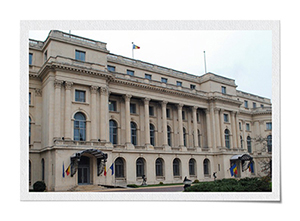 |
The Royal Palace located on Victory Avenue (Calea Victoriei), next to Kretzulescu Church, became the residence of Carol I, the first King of Romania starting with May 10th 1866. It became the most significant Royal Residence in Romania, the symbol of the Romanian Royalty and the later nineteenth century art. In 1882, it was one of the most important buildings of Bucharest where the electric generators were installed.In 1926 a fire destroyed the central part of the palace. Queen Marie of Romania commissioned architects to carry out reconstruction works. |
 |
Peleș Royal Domain located in Sinaia mountain resort, in Prahova County, includes Peleș Castle, the first electrified castle in Europe, Pelișor Castle and Foișor Castle. King Carol I of Romania commissioned the German architect Johannes Schultz to build the Peleș Castle in neo-Renaissance-German inspired architecture, with carved woordwork and colored stained glasses. The Peles Castle became the summer residence of the Romanian Royal Family. The Foișor Castle is the birth place of King Michael I of Romania. |
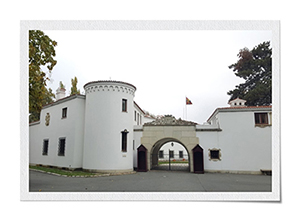 |
Elisabeta Palace built in the year 1936 in Bucharest on Kiseleff Boulevard, close to The National Village Museum, the King Michael I Park and the Arch of Triumph, designed by the architect Duiliu Marcu for Princess Elisabeta of Romania, the eldest daughter of King Ferdinand I and Queen Marie of Romania. In 1944 it became the residence of King Michael I. It is the residence of Her Majesty Margareta of Romania, the Custodian of the Romanian Crown, and of the Royal Family of Romania. Elisabeta Palace hosts the Royal Exhibition ”Elisabeta Palace”. |
 |
Săvârșin Castle situated on the Royal Domain Săvârșin, in Arad County, rebuilt in Neo-Classic style with a floor plan and a balcony in 1943 by Queen-Mother Elena. King Michael I bought the Royal Domain Săvârșin during the Second World War. The Castle is surrounded by a park that includes a lake. Her Majesty Margareta of Romania coordinated the restoration works of the Castle and park, keeping the design project details proposed by Queen-Mother Elena in 1943. |
 |
Kiseleff Palace situated on Kiseleff Boulevard in Bucharest, also known as the House at the Road, the Kiseleff Palace was included in the Royal Heritage in 1910 under the ruling of Carol I. King Michael I of Romania spent his childhood at Kiseleff Palace. It was a residence of King Carol II, Queen-Mother Elena and fututure King Michael I. |
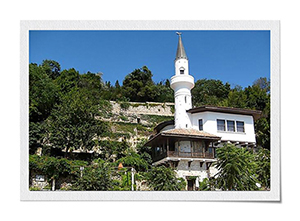 |
Balchik Castle also known as the Quiet Nest Palace, the Summer Palace of Queen Marie is located in Balchik, a town and resort in the Southern Dobruja. It was created by Queen Marie of Romania as summer residence. The Palace was built in Italian and Turkish architectural style, with a big minaret, a Christian chapel, Thracian, Greek and Roman symbols, white walls, red tile roofs. The unique Balchik Botanical Garden, a unique botanical garden in Central and Eastern Europe, includes large-seized cactus species, a holy spring, a waterfall, the Sighs Bridge, the Alley of Wine. |
 |
Bran Castle perched up on a cliff, in the Bran-Rucăr Gorge, less than one hour away from Brașov, the Bran Castle is a medieval fortress in the Southern Carpathian Mountains, Brașov County. In 1920 the city council of Brașov offered the Bran Castle to Queen Marie of Romania as a gift for her key role in the Great Unification from 1918. It became the summer residence of the Romanian Royal Family. Queen Marie of Romania coordinated the restoration and remodeling of the Castle, one of her favorite places. Princess Ileana built a chapel for the Queen Marie's heart after Balchik was occupied by Bulgaria. |
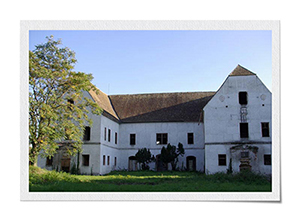 |
Banloc Castle 50 km away from Timișoara, built in a U-shape, the Banloc Castle is a massive building built in neogothic English style with think walls. Queen Elisabeth of Greece, King Carol II's sister, bought the castle and the estate in 1935. She restored the castle and lived here until 1948. |
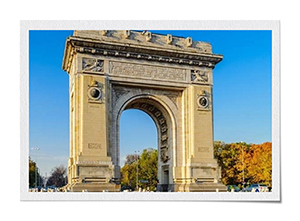 |
The Arch of Triumph situated in Bucharest, the Monument was built between 1921 and 1922. The authorities decided to organize a great parade to celebrate the Great Union, in preparation for the coronation of King Ferdinand I. In 1935-1936 the old Arch was replaced by the current Arch. The new exterior plaster was made of stone and marble. Later, in 2014, the authorities decided to restore the Arch. The Arch of Triump reminds Romania's participation in the First World War on the side of the Allied powers. |